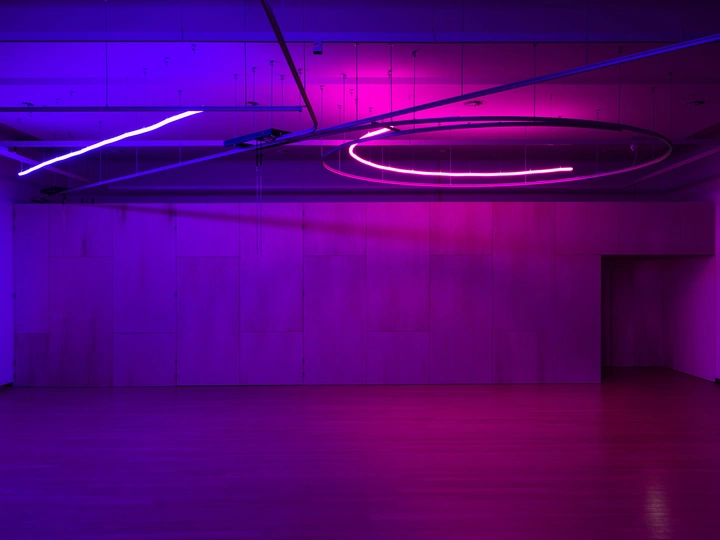The Counter-White Cube

Setareh Noorani (b.1995) is an architect, researcher, and curator whose work centres underrepresented voices and explores collective inhabitation and appropriation of space. Through architectural and spatial interventions, she questions dominant value systems in art and design, employing a distinct visual language that moves counter to the 'white cube'. Her clients include Design Museum Den Bosch, Wereldmuseum Leiden, Metro54, Amsterdam Museum, Buro Stedelijk, and the Stedelijk Museum Amsterdam.
At the Nieuwe Instituut (Rotterdam), her curatorial research focuses on feminist, decolonial, non-institutional, and more-than-human perspectives in how we build, remember, and transform cities. She currently leads New Currents: Indian Ocean Futures, and previously co-initiated Hidden Histories (with Creative Industries Fund NL), curated Designing the Netherlands, and initiated Feminist Design Strategies. She also led the long-term research project Collecting Otherwise and the transnational programme Arus Balik – Shifting Currents.
Noorani co-edited Remapping Collaborations Working Group (Nieuwe Instituut, 2025), Collecting Otherwise Manuals (Nieuwe Instituut, 2025) and Women in Architecture (nai010, 2023), and has been published in Footprint Journal, Radical Housing Journal, and others. In 2021, she received the Museum Talent Prize, awarded by the Dutch Ministry of Culture and the Mondriaan Fund. She holds an MSc in Architecture (TU Delft, cum laude).
In her artistic practice, Noorani explores public resistance and diasporic trauma through spatial research, (self-)publishing, and the disruption of dominant archives. She develops counter-archives that surface collective memory and lived experience. Recent residencies include Voorheen De Gemeente (2022–24), Biënnale Gelderland (2022), DSGN-IN at The Black Archives (2021–22), and SHELTER IN PLACE/SHELTER IN SOLIDARITY (2021) at Hotel Maria Kapel, together with Matt Plezier as SMET.
The white cube stands in tension with our times, where art and architecture are deeply shaped by politics—in aesthetics, conceptualisation, and social impact. The white cube offers museums non-offensive, non-political (neutral) environments. Yet, museums are grounded on certain representations, ideas and ideals of Modernity and enlightenment-thinking - extractive ideologies still affecting humans and non-human life alike. At its core, the white cube upholds whiteness: it symbolically and materially enforces dominant norms, institutionalises white superiority, and renders “bodies out of place” (Nirmal Puwar). Counter-White Cube is a research project unpacking this friction by interrogating the design, programming, and tools of museums. It challenges museums dominated by whiteness through critical and practical engagements in design and curatorial work. This research emerges from my practice—as a designer, curator, and resident within institutions—where I have tested ways of representing politically Black and queer (historical) contexts, and proposed longer-term strategies of spatial care and public engagement in building processes.
The Counter-White Cube explores strategies to be 'counter' and contaminate these museum spaces—not only through visual or spatial interventions, though even shifting form can provoke resistance with practitioners in white cube-contexts—but by questioning economies of display, authorship, and participation. Who builds, sustains, and redefines the institution? Following Deleuze and Guattari, institutions reflect what society desires of them—and this desire must be reimagined. Invoking thinkers like Sylvia Wynter and Katherine McKittrick, the research includes a speculative inquiry into whiteness and its dehumanising effects when central to arts and architecture museums. It asks how museums might relate differently to Blackness—not as consumable trend, but as carrying the real political implication of solidarity with generative difference.